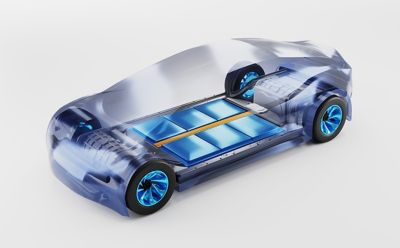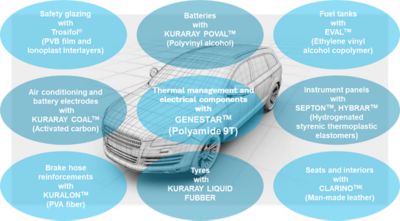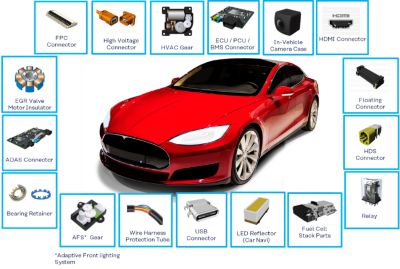-
-
Accédez au logiciel étudiant gratuit
Ansys donne les moyens à la prochaine génération d'ingénieurs
Les étudiants ont accès gratuitement à un logiciel de simulation de classe mondiale.
-
Connectez-vous avec Ansys maintenant !
Concevez votre avenir
Connectez-vous à Ansys pour découvrir comment la simulation peut alimenter votre prochaine percée.
Pays et régions
Espace client
Support
Communautés partenaires
Contacter le service commercial
Pour les États-Unis et le Canada
S'inscrire
Essais gratuits
Produits & Services
Apprendre
À propos d'Ansys
Back
Produits & Services
Back
Apprendre
Ansys donne les moyens à la prochaine génération d'ingénieurs
Les étudiants ont accès gratuitement à un logiciel de simulation de classe mondiale.
Back
À propos d'Ansys
Concevez votre avenir
Connectez-vous à Ansys pour découvrir comment la simulation peut alimenter votre prochaine percée.
Espace client
Support
Communautés partenaires
Contacter le service commercial
Pour les États-Unis et le Canada
S'inscrire
Essais gratuits
ANSYS BLOG
November 28, 2022
Making Electric Vehicles Go Further with New Materials
It’s no secret that vehicle original equipment manufacturers (OEMs) are aggressively pursuing electric vehicle (EV) development. Among the headwinds they face in selling their technology to consumers are price and vehicle range. Not surprisingly, there is a direct correlation between the two — in 2021, for any EV under $40,000, the average vehicle range was 187 miles, while the lowest vehicle range for any internal combustion engine (ICE) vehicle was 240 miles.1
Subject to ideal charging and discharging, EV batteries also degrade two to three percent per year, impacting range further over the life of the vehicle.1 To overcome these obstacles, manufacturers are looking to integrate new materials into their designs to help EVs go further. Kuraray, a global leader in specialty chemicals and functional materials, is partnering with Ansys to support these objectives.

A key focus area is lightweighting — making a vehicle lighter through material and design choices. EV batteries and their associated systems are heavy, so manufacturers are trying to reduce the weight of vehicles in any way they can. Vehicles with ICEs are heavy too, but unlike EVs, the range of an ICE-powered vehicle is less sensitive to a reduction in its mass.
“What sells vehicles at the moment is range,” says Andrew Miller, director of R&D at Ansys. “If you can get 50 miles or more range out of your EV than your competitors then you’ve got a winner. Of course, you could make the battery better, or the motor more efficient. But the easiest way to increase range is to just make the whole vehicle lighter.”

Kuraray's products in automotive.
Bringing Automotive Polymer Properties into Design
GENESTAR™ is a brand name of heat resistant polyamides developed by Kuraray. These PA9T series materials are well-balanced long-chain polyphthalamides (PPAs) that combine low water absorption and high mechanical properties over a broad temperature range, resulting in dimensional stability and blister resistance during surface mounting processes. The materials enable lightweight designs and parts miniaturization for EV batteries for better efficiency while ensuring safety in high-voltage applications. Their low-permeation properties significantly extend the life and durability of EV battery coolant tubes and battery parts subject to a wide range of temperature and humidity changes.

GENESTAR™ PA9T in automotive.
These all sound like appealing properties for an engineer to be considering in their next simulation of a vehicle component they may be developing, but with thousands of polymers out there, how do you find the information you need?
Kuraray and Ansys teamed up to provide detailed materials information on GENESTAR™ PA9T series materials to use directly in Ansys solvers. The data includes non-linear mechanical properties such as stress-strain and creep curves, along with thermal and electrical properties at a range of temperatures. Ansys applied its expertise of material models to ensure all data is “simulation ready” and available in its Global Polymers materials library for Ansys Granta MI and Ansys Granta Selector users. From there, it can be exported into a wide range of Ansys simulation tools, including Ansys Mechanical and Ansys Workbench.
In this way, Ansys is building partnerships with companies like Kuraray, where Ansys acquires data on their material products and publishes it in the Ansys ecosystem. The idea is to add value to that data by preparing it for simulation, hence the term “simulation ready.” Basically, Ansys gives customers data on materials that they can directly use in their simulations via Ansys tools, such as Mechanical and Ansys Discovery. What Kuraray and other material producers gain is added exposure in the marketplace, as a relationship with Ansys helps their materials gain access to some of the top engineering companies while reinforcing high product quality.
Choosing the Right Automotive Materials for the Job
To customers interested in a specific material, Ansys materials databases provide all the data they need. But it’s still up to each customer to decide whether they have found the right material choice for their EV application. Ansys offers a huge database of different polymers from numerous companies; however, within Granta MI, searching simulation-ready materials cuts the list down to 2000 polymers based on significant properties. It’s an exclusive subset of materials data available to Ansys simulation users, including OEMs looking for materials solutions to their lightweighting challenges.
Temperature-dependent data is one important element of this subset directly related to EV design. Often, OEMs use very high-performance polymers to address elevated temperatures near the battery pack and HV wiring, or on the vehicle interior or exterior where exposure to direct sunlight can easily drive temperatures upwards of 50-degrees Celsius (120-degrees Fahrenheit). Having data with the right thermal properties enables accurate simulation of a range of temperatures that leads to better thermal management.
Polymers exhibit highly nonlinear behavior and to accurately simulate that behavior you need to use nonlinear material models. These nonlinear models generally require stress-strain data, so if you don’t have that data you cannot use these models, and the accuracy of you simulation will suffer. Tapping into temperature-dependent and nonlinear materials data provided by Granta MI, OEMs can run multiple simulations using the full extent of Ansys technology and expect good results.
“Without tools like Granta MI, a lot of time is wasted searching for data needed for simulation,” says Miller. “Customers will Google it, they will go through old papers to find it or recreate it to support their simulations, ultimately leaving them open to errors. We're giving that data to them, ready to import directly into their simulations, validated by Ansys, which amounts to a huge time savings. And because we’re giving them temperature-dependent, nonlinear data, users can expect accurate simulation results.”
Interested in learning more about the materials that are needed for the electrification of the powertrain — and how you can search, compare, analyze and manage them? Check out our white paper, Materials for the Electrification of the Powertrain.
References
- Internal Combustion Engines vs. Electric Vehicles (EV), Engine Builder Magazine, October 14, 2021.